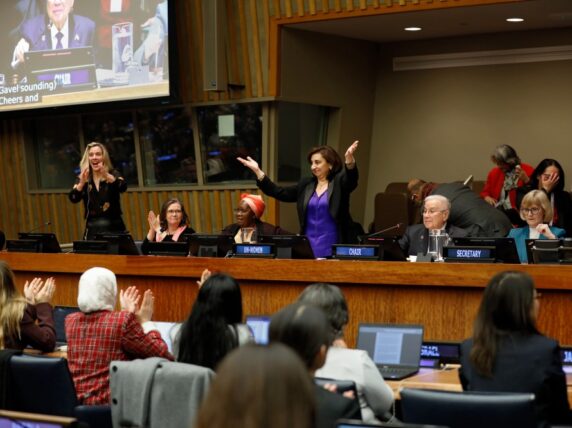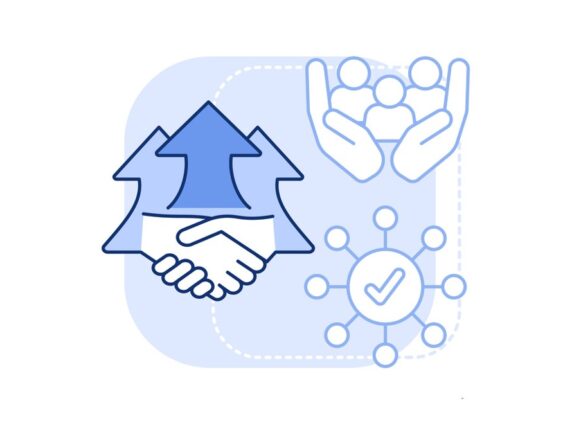5 ways to change the narrative from fear to hope
When a 2019 Gillette advert condemned toxic masculinity and encouraged men to be “the best a man can be”, activists rolled their eyes.
But we should also ask ourselves why some companies are better at bringing to life the very values that we believe we espouse and want to see commonplace in our societies.
The kind of long-term shifts in public opinion needed to end problems like toxic masculinity cannot just be achieved by raising awareness or “naming and shaming”. But civil society tends to be so busy exposing the world’s most terrible suffering that it rarely communicates hope, fatally undermining efforts to make change happen.
We must do imaginative and creative work to give people hope and make them believe that alternatives are possible. It is a more challenging way to approach communications, but if you do not talk about the world you want to see, who will?
The starting point for narrative strategy that leads to tangible impact is being able to actually articulate the changes we want to see. To that end, I have developed a five-step approach called Hope-Based Communications.
1. Sell the solution before documenting the problem
If your audience sees an intractable problem it risks becoming a new normal, an unfortunate but accepted reference point for how things are. Our challenge is to show them how human decisions created the problem and different decisions can fix it.
We need to have the courage to promote smart solutions, using communications to shift them from radical ideas to common sense. You can oppose austerity, but policies will not change until the public believes public spending actually works.
Subscribe to our newsletter
Our weekly email newsletter, Network News, is an indispensable weekly digest of the latest updates on funding, jobs, resources, news and learning opportunities in the international development sector.
Get Network NewsTalking about solutions is hard in the midst of dire crises, but the darkest times may be the moments where people most need a path towards the light. In 1988, faced with an uphill struggle to convince Chileans to vote “No” to Augusto Pinochet’s brutal rule, campaigners used their precious airtime to convince voters that “without dictatorship, happiness will come”. Rather than document the decades of torture and forced disappearances, they produced vivid images showing a jaded populace what freedom could look like.
2. Offer opportunity instead of threat
Civil society needs to move on from tactics based on shocking audiences with the scale of abuses and suffering. We must cultivate passion and determination to achieve positive change.
Producing powerful emotional content about our values is crucial to creating belonging and a sense of possibility. This makes supporters more dedicated to our cause and pressure for change irresistible, as in this Planned Parenthood video, which spread widely to potential supporters using Facebook ads.
NGOs can take advantage of the potential for using social listening to gain a deeper understanding of how their target audiences think and feel. Populists are already using digital communications tools to prey on people’s fears and anxieties. Civil society needs to be as adept at understanding their hopes and aspirations, to tease out the better angles of human nature. This can also give us the courage to defend values such as free movement by seeing that support does exist even if not expressed in the mainstream media.
3. Celebrate what you stand for instead of criticising what you oppose
With our energy focused on calling out the behaviour that we oppose, we miss opportunities to celebrate the behaviour we want to model. Worse still, we make the things we are against the new reality, and may even be inadvertently promoting what we oppose in the subconscious of our audience.
We may need to shift ideas to what we want people to know about our causes. But first we have to articulate them ourselves.
At Amnesty International, we are running simple animations as online A/B tests to talk about values like empathy, humanity, compassion and solidarity. At first it feels naive and trite, but we need to promote these values if we want people to view the world through them.
Based partly on these insights, Amnesty International is planning to root our global brand around the concept of shared humanity, both as a worldview or meta-narrative we want to make more influential in public discourse but also as a quality we want to nurture within everyone.
As civil society organisations see their values slipping away from what is considered “common sense” in public discourse, we urgently need to make a confident, imaginative and hopeful case for civil society. The need to champion values like shared humanity and international solidarity is greater than ever.
4. Tell stories that show people as everyday heroes, not victims
Civil society should focus on telling stories that celebrate the humanity in people and model the behaviour we want to see. Stories, in short, that show what it looks like to act on our values, and that put in people’s minds the picture we want them to see when they think of words like “civil society” or “human rights”.
A powerful way to change the mind of your audience is to show them someone they can relate to behaving a certain way or changing their mind, according to the HeartWired insight. This insight informs Amnesty International’s approach to telling the stories of those who open their doors to people seeking refuge or oppose their friend’s deportation.
We don’t always need to point the camera at the most dire crisis. While traditional news media was driven by a quest for “man bites dog” stories, digital media thrives on “dog cuddles cat” stories. Zeynep Tufecki says that content primarily performs well on Facebook by offering anger against a perceived enemy, surprise or a sense of belonging.
Telling stories that bring our values and worldview to life does not require massive budgets or agency support. Instead, give your staff smartphones with built-in cameras and train them to feed the hunger for authenticity demonstrated by Beto O’Rourke’s electoral road trip across Texas (aided by a healthy social media ad-buy).
5. Make people feel hope, not fear
Civil society need to be ambitious and lay claim to a brighter future.
We will always use facts and research to make our case, but we can no longer avoid asking ourselves: “What is the emotion you want to trigger in your audience? Can you give the anticipation of feeling good later?”
At Amnesty International, our audience research showed us that what our supporters want to know above all is how change happens, and how they can be a part of it. That is a crucial insight for the way civil society campaigns against “shrinking civic space”.
Based on the insight that their target audience wanted to be part of a cause that succeeds, Amnesty International France ran a “Thirst for Victory” campaign.
Find out more: a guide to using Hope-Based Communications is available here.
Category
News & Views



